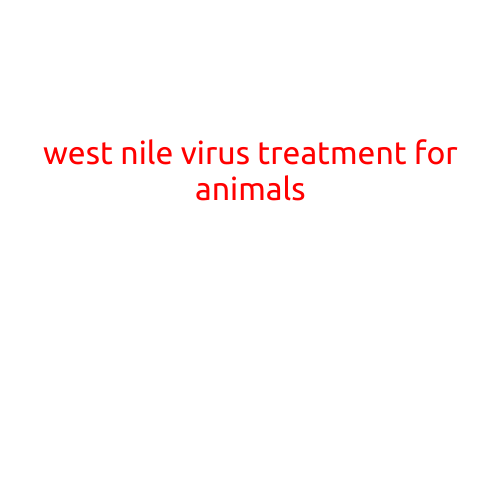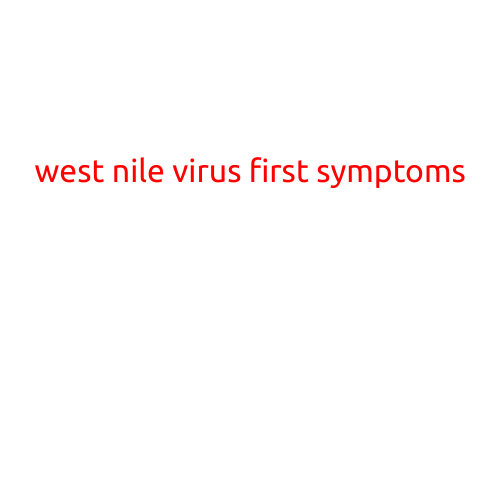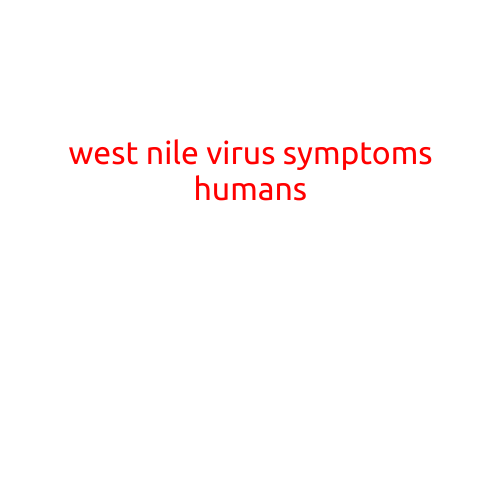
West Nile Virus Treatment for Horses
West Nile virus (WNV) is a serious and potentially deadly disease that affects horses and other equines. Caused by a flavivirus, WNV is typically transmitted through the bite of an infected mosquito. While there is no cure for WNV, early detection and prompt treatment can significantly improve a horse’s chances of survival and reduce the risk of long-term complications.
Symptoms of West Nile Virus in Horses
The symptoms of WNV in horses typically develop within 2-14 days after infection and can vary in severity. Common signs include:
- Fever
- Lethargy
- Loss of appetite
- Weakness or paralysis in the legs
- Neck and back stiffness
- Difficulty standing or walking
- Excessive sweating
- Abnormal behavior, such as abnormal vocalization, kicking, or circling
Diagnosis of West Nile Virus in Horses
Diagnosing WNV in horses typically involves a combination of clinical signs, laboratory tests, and diagnostic imaging. The following diagnostic tests are commonly used:
- Blood samples are taken to test for WNV antibodies and detect the presence of virus particles.
- Cerebrospinal fluid (CSF) samples are collected to test for WNV nucleic acid and antibodies.
- Magnetic Resonance Imaging (MRI) and Computed Tomography (CT) scans are used to rule out other neurological conditions and identify brain lesions.
Treatment Options for West Nile Virus in Horses
While there is no specific treatment for WNV, the following therapies can help alleviate symptoms and support the horse’s recovery:
- Supportive care: Providing adequate food, water, and rest can help the horse recover from the infection.
- Antiviral medication: Some antiviral medications, such as ribavirin, may help reduce viral replication and alleviate symptoms.
- Neuroprotective agents: Medications like corticosteroids and anti-inflammatory agents can help reduce inflammation and protect the nervous system.
- Physical therapy: Ranging from gentle exercises to physical therapy modalities, such as heat and cold therapy, can help maintain joint mobility and prevent muscle atrophy.
- Pain management: Pain relief medications, such as butorphanol and flunixin, can help alleviate discomfort and pain associated with WNV.
Prevention and Control Measures
Preventing and controlling WNV outbreaks in horses is essential to minimize the risk of transmission and reduce the incidence of the disease. The following measures can be taken:
- Mosquito control: Eliminating mosquito breeding sites, using insecticides, and introducing biological controls can help reduce the mosquito population.
- Vaccination: Vaccinating horses against WNV can provide protection against the disease.
- Equine pest management: Regularly inspecting and cleaning stalls, as well as providing proper drainage and regular maintenance, can help reduce mosquito breeding sites.
- Wear insect repellent: Horses can wear insect repellent clothing and bandanas to reduce their exposure to mosquitoes.
Conclusion
West Nile virus is a serious and potentially deadly disease that affects horses and other equines. Early detection and prompt treatment can significantly improve a horse’s chances of survival and reduce the risk of long-term complications. By understanding the symptoms, diagnosis, treatment options, and prevention and control measures, horse owners can take proactive steps to protect their equine companions and minimize the impact of WNV outbreaks.





